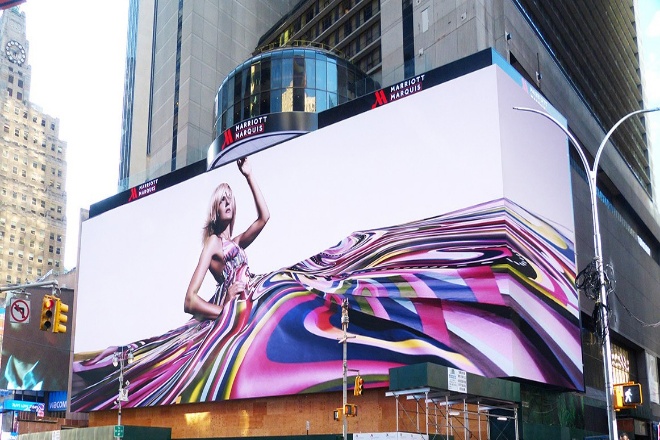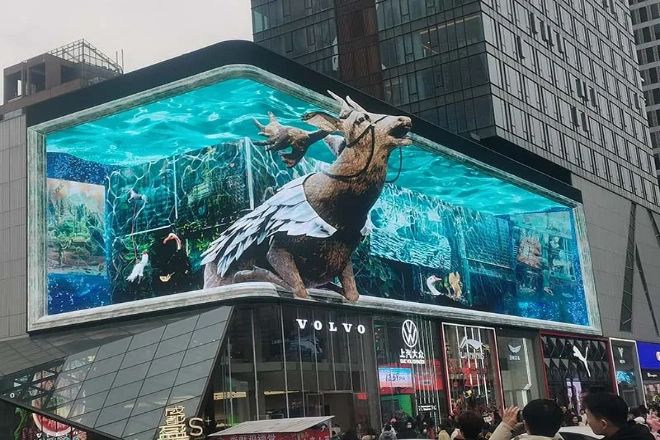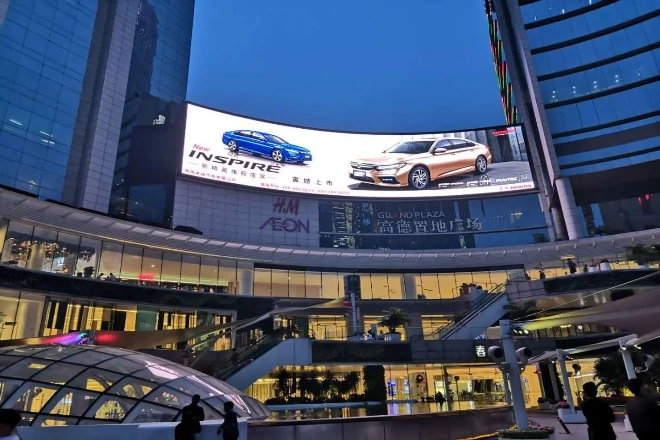مقدمة

As the core tool of modern visual communication, شاشات عرض LED are widely used in various fields with their excellent performance. However, “black screen” failures still occur from time to time, affecting information dissemination and user experience. Can LED display screens achieve a “never black screen” LED display screen? Of course, it can.
1. What is an LED display screen "never black screen"
Speaking of “never black screen,” LED display screens, in fact, are the kind of LED screens we usually see that can display content steadily regardless of day or night, wind or rain. It will not go on strike for a long time, nor will it go black because of a bad environment.
Just like the old TV at home, although it is old, it can still be turned on, but the “never black screen” here has higher requirements, and it must be kept in the best condition anytime and anywhere to bring us the best visual enjoyment.
“Never black screen” LED display screens are on the market, and everyone is scrambling for them. For example, high-end commercial displays, such as luxury stores and high-end shopping malls, have to rely on this LED screen to improve their grade and attract customers.
If the LED screen goes black from time to time, it will ruin the signboard. There are also public transportation information signs, such as subway stations and bus stops. The LED screen is our compass for travel. If it goes black, everyone will be confused.
In addition, outdoor advertising depends on the LED screen to attract attention. If it goes black, advertisers will lose a lot. So, the “never black screen” LED display is in hot market demand. Who doesn’t want to have it?
2. How can the current LED display technology achieve a never-black screen?

Today’s technology has made great strides towards the goal of “never black screen”! This is not bragging. Let’s talk about how these black technologies are done.
1) عالية سطوع and energy saving are both achieved
First of all, we have to talk about those high-end LED chip technologies, such as Mini LED and Micro LED. You may have heard of them, but you may not know how awesome they are.
Mini LED is to make the LED light small, which not only improves the brightness, contrast, and resolution of the display but also greatly reduces power consumption, which is simply killing two birds with one stone.
Micro LED is even more amazing. It is hailed as the next generation of display technology. It has higher brightness and lower power consumption, and each pixel can be independently controlled, so the display effect is awesome!
In addition, the current intelligent brightness adjustment system is also unique. It can automatically adjust the brightness of the display according to changes in ambient light.
For example, at night or on cloudy days, it will reduce the brightness, which saves power and protects the eyes; on sunny days, it will increase the brightness to ensure that you can see clearly. This intelligent adjustment not only saves energy but also allows the display to last longer.
2). Good heat dissipation and strong protection, no matter how bad the environment is
For LED displays, heat dissipation is a big problem. But don’t worry, the current technology is also great. High-efficiency heat dissipation technologies such as heat pipes and liquid cooling are used to ensure that the LED chip will not get “fever” when working. In this way, the performance of the display is more stable, and the life is longer.
Moreover, the current display also has dust, water, and corrosion protection measures. Whether it is wind and sand or rain, or even corrosive substances, don’t think about easily damaging the LED display. This comprehensive protection allows the display to work steadily in various environments.
3). Remote monitoring plus predictive maintenance, early detection of faults
Nowadays, LED display screens can also be remotely monitored through IoT technology! Just like the smart camera installed in your home, maintenance personnel can view the working status of the display screen in real time from thousands of miles away.
Once something is wrong, such as abnormal brightness, high temperature, etc., it can be handled immediately.
What’s more powerful is that there is a predictive maintenance strategy. Through big data analysis, the system can predict the life and potential failure points of display screen components. Just like when you drive, the on-board system will remind you when to change tires and when to maintain the engine.
In this way, maintenance personnel can replace or repair in advance to avoid black screens and other faults.
4). Redundant design plus self-repair, no fear of failure
Finally, we have to talk about redundant design and self-repair technology. Today’s display screens all adopt a modular design, just like a puzzle, piece by piece. In this way, even if one piece fails, the other pieces can continue to work to ensure that the overall display is not affected.
Moreover, some advanced display screens have self-repair capabilities. For example, if a pixel is broken, the display can automatically switch to the backup pixel for display, just like your computer has dual systems. Even if one system crashes, the other system can continue to be used.
3. Challenges and solutions that may be faced in the implementation process

In the pursuit of the “never black screen” of LED display, it is like climbing a mountain. You have to consider whether the equipment (cost) is powerful and whether the route (technology) is feasible.
Today, let’s talk about the two major obstacles on this road: cost considerations and technical bottlenecks and how we can fight them.
1). Cost considerations:
Speaking of cost, it is a headache. If you want the display to be bright, energy-saving, and durable, then Mini LED, Micro LED, and other high-end technologies must be used, but they are expensive. And those gadgets with intelligent brightness adjustment, efficient heat dissipation, dust and water resistance, which one is not a spendthrift?
But we can’t just look at the wallet; performance is also a hard truth. So what should we do? You learn to “save money and spend it on the blade.”
- Optimized design:
Just like decorating a house, it is not necessary to put gold and silver in every corner. The key is to make the living room (core display area) beautiful. We can optimize the design of the display screen, such as reasonably arranging LED chips, to reduce unnecessary waste, which can not only ensure performance but also save a lot of money.
- Mass production:
Everyone who buys things knows that wholesale prices are cheaper than retail prices. In the same way, if we produce more display screens, the cost will naturally come down.
- الابتكار التكنولوجي:
This is a great way to reduce costs. We have to keep thinking about new ideas, such as using cheaper materials to achieve the same good results or improving production processes to reduce the defective rate.
- Market positioning:
Not all customers need top-level configurations. We can provide products of different grades according to customer needs. High-end customers are given the best, and mid- and low-end customers are given the most cost-effective ones. This not only meets market demand but also makes money.
2). Technical bottleneck:
Technical difficulties are like steep slopes on mountain roads. They look scary, but we have to find a way to climb them.
Color stability under long-term high brightness: This problem is like the decline in vision when people get older. LED chips will also become “presbyopic” when they work at high brightness for a long time.
We have to develop new materials to make LED chips more durable and stand the test of time. At the same time, we have to optimize the “internal organs” of the display (driving circuit and heat dissipation design) to ensure that the LED chip can be stable even at high brightness.
- Reliability in extreme environments:
This is like asking athletes to compete in extreme weather. Not everyone can withstand it. We have to put on “protective clothing” for the display (a shell with a higher waterproof grade and an efficient heat dissipation system) so that it can maintain its best condition in various harsh environments.
For specific environments, we also have to tailor solutions, such as adding a “small fan” to the display in a high-temperature environment and wrapping the display in a cold environment with a “quilt.”
خاتمة
In summary, through technological innovation and interdisciplinary integration, the vision of a “never black screen” for LED displays is gradually becoming possible.
With the improvement of performance, reduction of costs, and the application of intelligent management systems, the stability and reliability of LED displays will be significantly enhanced.
أخيرًا، إذا كنت تريد معرفة المزيد عن شاشات LED، يرجى الحصول على اتصال معنا.
